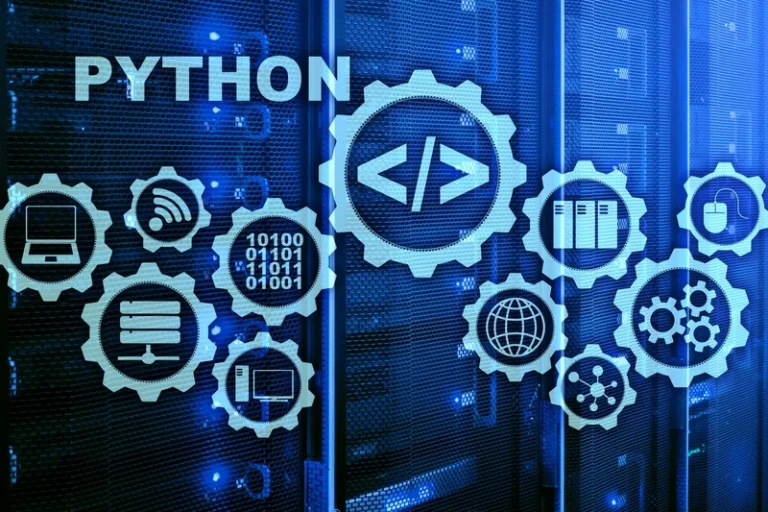Administering treasury procedures is an essential part of your business’s financial management. This function not only handles your company’s cashflow and financial assets, but also ensures it has sufficient liquidity to meet its financial obligations. Interest rates have a significant impact on your risk strategy and financial performance. By deploying AI-powered technology and bots to oversee changes in rates, you’ll stay ahead of the game, minimizing risk. Utilize robots to report time and create and post payroll for your biggest asset—your employees. Managing your company’s cashflow is a necessity and can be made even better with data-driven decision making.

Financial robots keep evolving from specific task automation to entire process automation that drives financial analysis and prognosis accuracy. RPA in financial services promises maximum benefits if combined with intelligent automation technologies. This is a way to take a stand against competition and address the challenges presented by the evolving financial market.
Ten RPA use cases in finance and accounting
Before the integration, your employees have to build a clear and straightforward system for the task you’re going to automate. Whether it’s a bank account opening or credit issuing, make the process follow a routine and rule-based order with only one expected result. Accounting is a major field that can benefit from RPA in the finance industry. Robotic solutions can automate the process of transcribing invoices from PDF into SAP-compatible formats, and CSV spreadsheets. Besides, RPA software places the finale file version on the server automatically. It’s obvious that the main goal of RPA in the finance industry is to reduce time and money expenses.
- An RPA-based calculator can calculate the bonuses for regular customers, deposit fees, and produce the final interest rate for the deposit.
- Read our article about RPA marketplaces to see how RPA companies are integrating AI models into their bots.
- Robots can expeditiously navigate through systems, verify data, perform the required background checks, and finally approve or reject the application.
- RPA bots can extract data from various sources, perform calculations, validate data, and generate reports.
- The efficiency of the purchase-to-pay (P2P) process affects satisfaction rates, costs, and influences your company’s ability to achieve wider business goals.
- However, equipped with modern AI & ML technology, RPA is effectively used to manage multiple finance processes.
- Reconcile the data by using RPA and business rules to generate reconciliation statements.
You can use RPA to automate Accounts Receivable processes, including customer data setup and management, data extraction, sales quotation, and invoice generation and distribution. RPA solutions with robust features can improve cash flow and eliminate cash gaps. RPA collects data from different sources and executes data entry automatically.
Quick Bank Account Opening
Replace slow, time-consuming tasks with automation and enable employees to focus on more productive work. Since its initial introduction to the competitive financial world, robotic process automation has seen significant growth. Today, it is one of the most crucial and vital factors that help businesses to improve their in-house task. RPA bots assist you in gathering the business data for the tax liability and automating tax compliance.

If you wonder how to start or improve the implementation of automation and digitization of processes and document flow in your company, contact us for your 30 minutes free consultation. Introducing RPA in the audit process improves control and consistency, boosts data accessibility through integration with a variety of systems, and increases accuracy and efficiency. You can trust finance RPA with the most important processes in the organization, like customer onboarding. Using character recognition, RPA collects information about the clients and registers all the personal details in the database.
Process customer inquiries and complaints
One of the best ways to deal with the hassles of preparing a profit and loss report is using rpa accounting. NIX is a team of 3000+ specialists all over the globe delivering software solutions since 1994. We put our expertise and skills at the service of client business to pave their way to the industry leadership. With the opportunity to process invoices quicker, your organization can also take advantage of early payment discounts. Select an operating model and workforce for your RPA tasks and adjust it to your company for seamless implementation.

Intelligent automation tools can save considerable costs and effort and remove human error. As the technology continues to advance, RPA acquires more and more applications rpa use cases in accounting in the banking industry. People immerse themselves into digital banking, mobile payments, cryptocurrencies, and the other opportunities of Web 3.0.
Automate your workforce with OTAKOYI experts
Keep up with this post to know more about robotic process automation in finance, its benefits, and use cases. Blueprint enables employees to feel confident that the work they’re doing not only drives business value but also protects RPA bots from breaks and outages. Automatically capture data from paper documents, contracts, and PDFs by using intelligent document processing and integrate it with ERP system. https://www.globalcloudteam.com/ Auto-collect data from ERP and other F&A enterprise systems and generate reports by using RPA. Improve efficiency and productivity by limiting manual intervention only for eyeball verification. Automate pulling in data from different legacy systems for financial reporting across the board, reduce errors involved in the manual swivel chair operations, improve productivity of the Accounting team.
Processing loan applications is a multi-step process involving credit, background, and fraud checks, along with processing data across multiple systems. When RPA bots take this over, they process every application the same way, quicker, and with greater accuracy. Then if any information is missing from the application, the RPA bot can send an email notifying the right person. By removing humans from certain processes, companies can avoid costly human errors and reduce the risk of operational disruption. This is especially important in the world of finance, where the cost of human errors can be astronomically high. The future of robotic process automation (RPA) is looking brighter and brighter, as software robots become more and more prevalent cross-industry.
Step 3: Comprehensive Strategy Development
ML models help group customers into categories based on their behavior, so the most appealing products or services can be recommended to them. For example, banks know which customers might be most interested in opening a new line of credit. The latest RPA solutions use the integrated capabilities of artificial intelligence (AI) and ML models to “review” reports, flag potential issues and learn from experience. The RPA solutions have a high level of security for finance functions, and they work without interruption for substantial cost savings.
They can be programmed and trained to perform work, from specific tasks to entire processes. Those processes can be well-defined, simple and repetitive, or complex, non-routine and unstructured. So, it is a good practice to carefully determine your starting point and partner with a reputed financial software development company like Appinventiv to embrace RPA trends in finance. One of the best benefits of RPA for finance is budget planning and forecasting.
Prepare the data
In doing so, invoice processing is accelerated, preventing potentially costly errors and avoiding financial penalties for late or incomplete payments. Furthermore, most processes are decently structured and rule-based so that no exceptions or human interference are required. RPA technology drives down operational costs by automating the transaction-heavy, manually intensive tasks that require reconciliation. Digital workers can retrieve and compile data from multiple back-office systems, reconcile amounts (say, for invoice payments or billed amounts) and take action to resolve breaks in real-time.